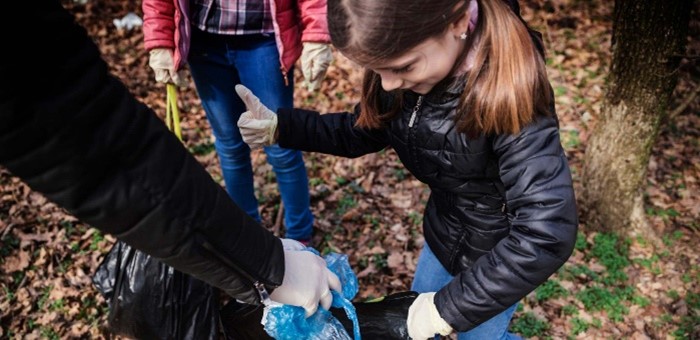Keeping Sustainability in Focus
Women’s History Month Reflection: Growing up in India in the 90s, there were several formative experiences that come to mind: economic liberalization (neighborhoods that watched TV together could now afford one in each house), acute water crisis (my mother would ration our showers) and the Kargil War (as a teenager, it got me to pay attention to the news). Given I chose to work for a company that enables electronics and communication, water solutions and industry leading products that keep frontline workers and patients safe, it does appear that life progresses towards circularity.
The terms ‘sustainability’ and ‘circular economy’ were not part of common lexicon when I was growing up. However, my views on these topics stem from, and continue to be influenced by my upbringing and specifically how my mother, a high school teacher, ran our household with cheerful frugality. Her words of wisdom, rooted in Indian culture, included: never waste anything – precious resources nor advancement opportunities; spend the first third of your life collecting knowledge, the second third of your life collecting wealth and wisdom, and the last third giving it all away to make lives better for future generations.

These concepts now resonate even louder as UN Sustainable Development Goals (SDGs).
Thankfully, ambitious goals in 2050 reaching net zero, at most by 2050 are now commonplace. In the healthcare packaging materials context, there are critical factors that simply cannot be compromised –assurance of sterility and avoidance of chemical contamination are key and can make the difference between patient life or death. Hence, along the reduce-reuse-refurbish-recycle continuum, the first three concepts tend to reach the point of diminishing returns quickly and incorporation of recycled content, while a step change, remains extremely challenging.
As with initiatives pursued by committed organizations, the debate is less on the ‘what’ and much more on the ‘how’. Achieving an infinite closed loop system would represent the holy grail for sustainability, wherein all packages would utilize post-consumer recycled content somehow ‘rejuvenated’ at a molecular level (to eliminate chances of contamination) e.g., through advanced (chemical) recycling. Pulling this off would necessitate, I believe, in increasing order of difficulty (a) generation of post-consumer recycling streams from healthcare facilities enabling high yields for subsequent plastics production, (b) economically viable reverse logistics depositing waste streams into a global chemical recycling network, and (c) reimagined regulatory guidelines around principles of traceability. One could argue that if molecular rejuvenation is at play, then the chemical recycling process is a true representation of the point of origin, rather than recycling at a healthcare facility. Another important concept in the marathon to net zero is energy footprint. Decarbonization of energy systems needs to accelerate, and in addition to direct green power products, there are creative financial instruments emerging, such as Virtual Power Purchase Agreements (VPPAs) that enable companies to directly create new renewable electricity supply without the constraints of geography.
It is tempting for me to say that dreaming is a form of planning. As I reflect on International Women’s Day and my own personal passion for sustainability, I’d like to encourage women to find a way to push for continued change and a focus on sustainability. There are several ways in which we can continue to keep moving the sustainability needle right now:
-
Looking into the packaging life cycle – raw materials, design, production/handling, sterilization, distribution, product and post-consumer waste;
-
Continuing to probe where the efficiencies are, in addition to better understanding scope 3 emissions;
-
Being ambitious and vocal is essential, as is a willingness to shepherd these difficult projects that require technical firepower, economic viability and a change in regulatory principles.
All of this will require the coming together of truly interdisciplinary talents and diverse perspectives. The reason I am in healthcare packaging is that it appeals to me at multiple levels and satiates my desire to make a difference to patient outcomes through packaging. I not only appreciate the scientific marvels behind packaging development and sterilization, but most importantly, it has given me the pleasure of meeting some of the most talented and remarkable women I’ve ever known. As we’re in the middle of Women’s History Month and having recognized International Women’s Day on March 8th, my sincere hope is that women continue to think about sustainable careers in every sense of the word and keep pushing for positive change. I look forward to hearing your voice and feeling the impact you will undoubtedly have on sustainability!



